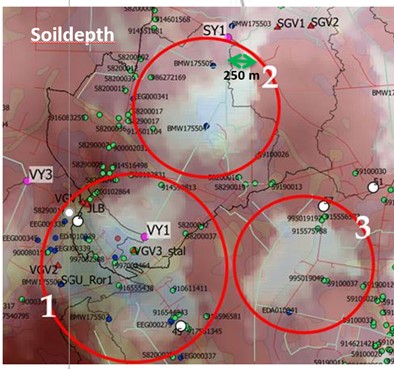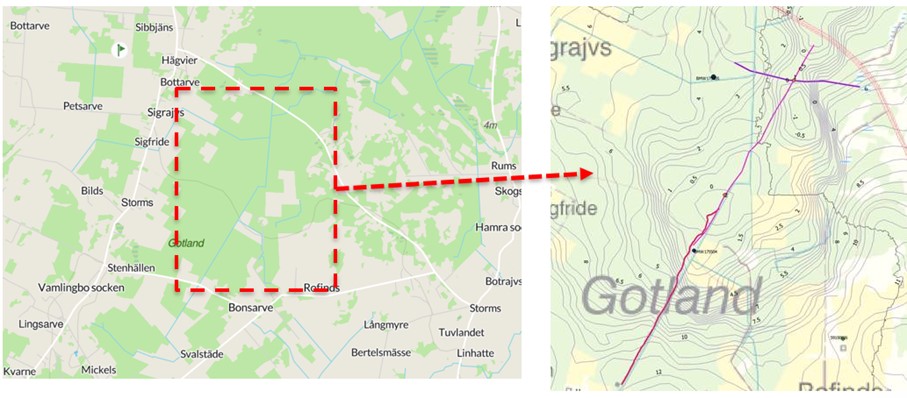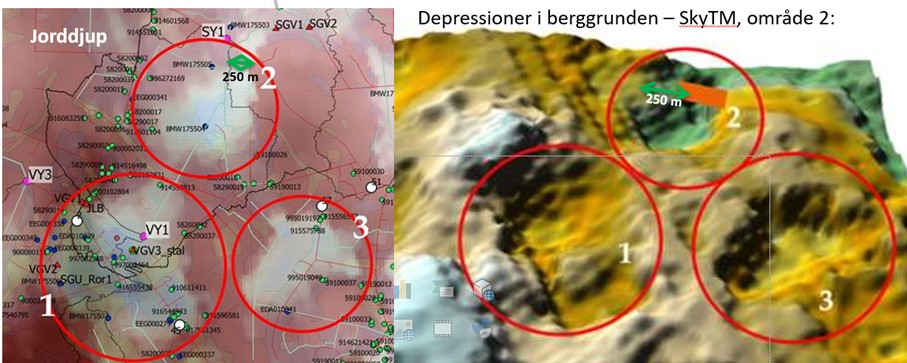
Unique selling points
- Rainwater storage and groundwater replenishment.
- Reduction of the saline intrusion to the aquifers.
Description of the technology
Natural ponds and artificial surface dams are areas filled with water (such as rainwater, drainage water from automatic floodgates, etc.), that are smaller than lakes, and can be used for water storage and infiltration into the aquifers. They are used to manage stormwater runoff, prevent flooding and downstream erosion, and improve water quality in an adjacent river, stream, lake or bay.
They are essentially shallow ponds that are designed to infiltrate stormwater through permeable soils into the groundwater aquifer. Infiltration basins do not release water except by infiltration, evaporation or emergency overflow during flood conditions.
In the NextGen project, natural ponds and artificial surface dams are used to store the rainwater collected and distributed from the automatic floodgates ditches. The capacity of these systems is approximately of 8500 m3/ha/year of water storage.
A topographic map where the natural ponds and artificial surface dams will be constructed in the Gotland region can be observed in Figure 1.
Figure 2 shows the technology that is being used to find appropriate aquifers where water can be infiltration through the natural ponds and artificial surface.
Flow scheme of the technology

Figure 1. The topographic map to the right shows the soil depth to the rock. As there are so called depressions in the rock and the depression seems to be filled mainly with sand, this area provides high potential for development of a ground water storage system.
Pictures

Synergetic effects and motivation for the implementation of the technology
- Replenishment of groundwater sources
Natural ponds and artificial surface dams are used to store the water directly collected from rainwater in rainy periods and water drained by the automatic floodgates to these systems and to gradually infiltrate it to the aquifer, increasing the water availability of the area.
- Increase of groundwater quality
Rainwater infiltrated into the aquifer allows reducing the water stress on the local groundwater sources and additionally, in many cases, increases the water quality of the aquifer reducing the salinity of the water.
- Reduction of energy consumption for groundwater pumping
Increasing the water levels of the aquifers through locally infiltration of water allows to avoid long piping distance and will reduce the energy required for long distance pumping of drinking water and could replace investments in desalination which is related to high energy demand.
Technology requirements and operating conditions
The following table summarize the requirements of the natural ponds and artificial surface dams to operate in the most appropriated conditions.
Table 1. Required specifications for the natural ponds and artificial surface dams.
|
Parameter |
Units |
Min |
Max |
Reference |
|
Temperature |
ºC |
n a |
20 |
Below 0 the surface dams will freeze, max 20 (above 20 C, the water has to be chilled by a cooling system) (LIVSFS 2017:2). |
|
Rainfall |
mm/year |
200 |
700 |
SMHI, Yearly precipitation |
|
Water volume |
m3 |
20 000 |
95 000 |
Gotland County Administrative Board. Oral recommendations. |
|
Turbidity |
NTU |
n a |
50 |
Key performance indicators
Table 2. KPIs for natural ponds and artificial surface dams provided in NextGen, D1.2.
|
Parameter |
Units |
Min |
Max |
|
Percentage of water recovered |
% |
50 |
200 |
|
Removal yield of metals |
% |
- |
95 |
|
Removal yield of conductivity |
% |
- |
10 |
|
Removal yield of colour |
% |
- |
70 |
|
Removal yield of COD |
% |
- |
80 |
|
Removal yield of anions |
% |
- |
10 |
|
Removal yield of E. coli |
% |
- |
99 |
Links to related topics and similar reference projects
|
Natural ponds and artificial surface dams |
Reference |
|
NextGen |
Publications
- Livsmedelsverkets författningssamling (Swedish Food Agency), Livsmedelsverkets föreskrifter om ändring i Livsmedelsverkets föreskrifter (SLVFS 2001:30) om dricksvatten. LIVSFS 2017:2., 2017
- Plana Puig, Q., Nanu, C., Groza, I., Soares, A., Vale, P., Monokrousou, K., Makropoulos, C., Katsouras, G., Tsalas, N., Tazes, N., Tsimnadis, K., Lindeboom, R., Plata, C., Suters, R., Kenyeres, I., Plà, M., Filipsson, S., Hedman, F., Kim, J., Hofman, J.,, D1.3 New approaches and best practices for closing the water cycle, 2022
- Sveriges geologiska undersökning Geological Survey of Sweden (SGU), SGU-rapport 2013:01. Bedömningsgrunder för grundvatten (Assessment criteria for groundwater), 2013
- Sveriges meteorologiska och hydrologiska institut (SMHI), Klimatdata – kartor, 2020
